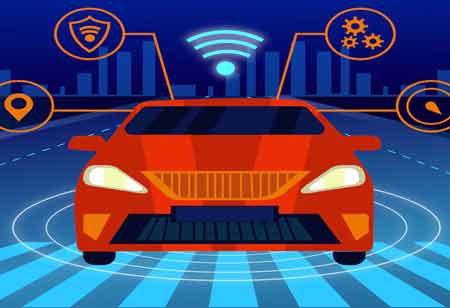THANK YOU FOR SUBSCRIBING
THANK YOU FOR SUBSCRIBING
Be first to read the latest tech news, Industry Leader's Insights, and CIO interviews of medium and large enterprises exclusively from Auto Tech Outlook

By
Auto Tech Outlook | Wednesday, October 15, 2025
Stay ahead of the industry with exclusive feature stories on the top companies, expert insights and the latest news delivered straight to your inbox. Subscribe today.
Fremont, CA: Autonomous vehicles lead to a promise not just of changing transportation but also of making lives more connected and convenient. Autonomous driving is fundamentally at the heart of this revolutionary automotive industry change. As innovation progresses and public attention increases, it brings into play the future of autonomous driving, changing how we think about mobility, urban planning, and environmental sustainability.
AI, machine learning, and advanced sensors are central to the backbone of autonomous driving technology. This kind of technology allows vehicles to see, sense, and make real-time decisions; it can navigate complex environments. The more advanced AI algorithms are, the safer and more reliable the self-driving cars will be, addressing one primary concern of consumers and regulators. This gradual movement in the technology field would become an accepted and embraced system that changes how people move around.
The most convincing argument of all is the convenience of autonomous driving. Imagine commuters could use their travel time more fruitfully to work on, relax, or do something interesting. The vehicle they are traveling in bypasses the road's congested traffic. Such a movement may reduce the stress of daily commutes and allow for a less stressful and enjoyable travel experience. Moreover, self-driving cars can optimize routes and thereby remarkably minimize travel time and fuel consumption, increasing overall efficiencies. When cities are congested, autonomous vehicles are likely to alleviate this, making life in the town much more accessible.
Connectivity will connect vehicles to the internet, enabling real-time communication between other vehicles, infrastructure, and cloud services. This inter-networked system enables a coordinated method of transportation, where vehicles report on available traffic conditions, hazards on the road, or even adjacent points of interest. Such a level of connectivity can virtually enhance safety, with vehicles better able to anticipate and react to danger before it unfolds.
It can introduce autonomous vehicles to public transit and significantly promote the betterment of urban mobility. Autonomous public buses and shuttle services could provide on-demand accessibility to everyone's specific community requirements, a very efficient alternative to public transport. This would make public transport more accessible to larger groups of people who depend on it and avoid excessive dependency on personal autos.
The environmental impacts of self-driving cars are also significant: These may soon optimize driving habits, consuming less fuel and avoiding emissions. Combined with the gradual entry of electric vehicles, this synergy of autonomy and electrification will further reduce transportation's carbon footprint, which should, in turn, combat climate change.
However, the future of such an autonomous car also has its crass side. The matter becomes crucial in facilitating society's smooth integration of this technology: it requires regulatory frameworks, ethical considerations, and public acceptance. Thus, it necessitates the involvement of manufacturers, policymakers, and consumers in developing guidelines while putting safety, security, and equity at the forefront.
 Copyright © 2025 AutoTech Outlook. All Rights Reserved | Privacy Policy | Subscribe | Sitemap | About us | Feedback Policy | Editorial Policy
Copyright © 2025 AutoTech Outlook. All Rights Reserved | Privacy Policy | Subscribe | Sitemap | About us | Feedback Policy | Editorial Policy 



